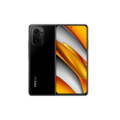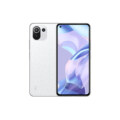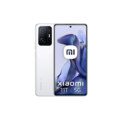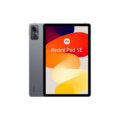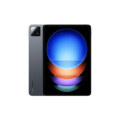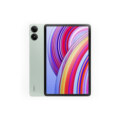Xiaomi Poco F2 Pro


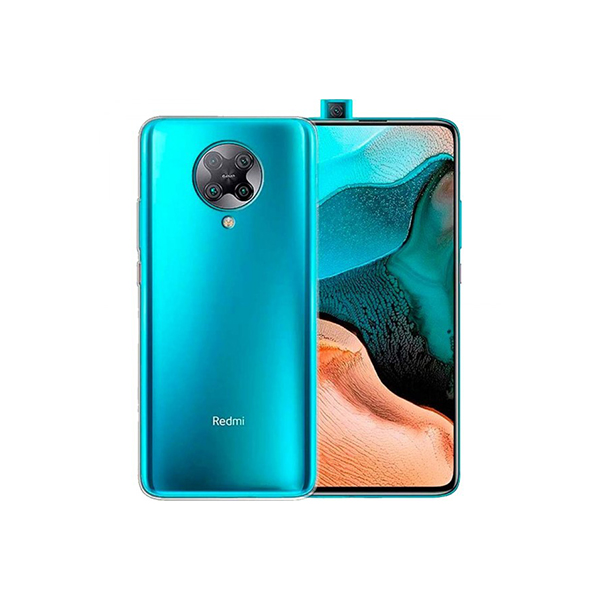
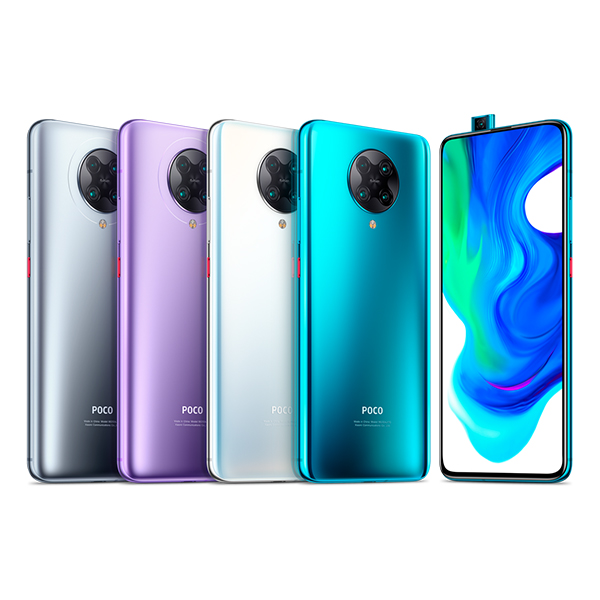
Specs
General
| Device Type | Xiaomi Redmi Phone |
| Announced | 12 May, 2020 |
| Released | 19 May, 2020 |
| Status | Available |
Design
| Dimensions | 163.3 x 75.4 x 8.9 mm |
| Weight | 218 g |
| Protection | Glass front (Gorilla Glass 5), glass back (Gorilla Glass 5), aluminum frame |
| Colors | Neon Blue, Phantom White, Electric Purple, Cyber Gray |
Display
| Refresh Rate | 60 Hz |
| Display Type Display Technology => A number of display technologies and types used in mobile phones => TFT (Thin Film Transistor), IPS (In-Place Switching), OLED (Organic Light Emitting Diode), AMOLED (Active-Matrix Organic Light-Emitting Diode), Super AMOLED (an even advanced version of AMOLED), Resistive Touchscreen (Resistive touchscreens contain two layer of conductive material with a very small gap between them which acts as a resistance), Capacitive Touchsceen (Capacitive touchscreen technology consists of a layer of glass coated with a transparent conductor) | Super AMOLED |
| Size | 6.67 inches |
| Resolution | 1080 x 2400 pixels |
| Display Colors Display Colors is refers to the number of different shades of colors that the screen is capable of displaying => 64K colors, 256K colors and 16 million colors, Obviously 16M is highest available range of colors and better than others. | 1 B |
| Pixel Density Pixel Density (PPI) is refers to the concentration of pixels on a particular display, measured in pixels per inch (ppi). Pixel density is calculated by dividing the diagonal pixel resolution of a display by its diagonal size, higher pixel density better display quality. | ~395 ppi |
| Touch Screen | Capacitive Touchscreen, Multitouch |
| Display Protection Display Protection => Gorilla Glass is a special alkali-aluminosilicate glass shield with exceptional damage resistance that helps protect mobile displays from scratches, drops, and bumps of everyday use, It is always better to go for a smartphone with Gorilla Glass for that added protection and peace of mind. | Corning Gorilla Glass 5 |
| Features | HDR10+, 500 nits typ. brightness (advertised) |
| Secondary Display | No |
Camera
| Front Camera | Motorized pop-up 20 MP, f/2.2, (wide) |
| Camera Setup | Quad |
| Main Camera Camera is able to capture photographs and usually videos, The most important characteristics of a camera are the resolution (measured in megapixels), lens focus type (fixed or automatic), higher megapixel cameras are known to capture higher quality photos, but not always a good measurement of the photos quality. |
64 MP, f/1.9, 26mm (wide) 5 MP, f/2.2, 50mm (telephoto macro) 13 MP, f/2.4, 123˚ (ultrawide) 2 MP, f/2.4, (depth) |
| Video | 8K@24/30fps, 4K@30/60fps, 1080p@30/60/120/240fps, 1080p@960fps; gyro-EIS |
| Camera Features | Geo-tagging, touch focus, face detection, HDR, panorama |
| Flash Flash Light => There is commonly two types of flash lights are used in camera mobile phones, LED Flash (LED flash offers lower power consumption with drive circuitry that takes up very little room, LEDs can be strobed faster than any other light source), Xenon Flash (xenon flash produces an extremely intense full-spectrum white light for a very short duration) | Dual-LED dual-tone flash |
Hardware
| Operating System OS => Every computer system run on a base software called Operating System (OS). Operating System controls all basic operations of the computer (such as smartphone, PDAs, tablet computers and other handheld devices). The Operating System allows the user to install and run third party applications (apps), apps are used to add new functionality to the device. | Android 11 |
| Chipset Chipset is a group of integrated circuits designed to perform one or a more dedicated functions, often with real time computing constraints, Popular smartphones are equipped with more advanced embedded chipsets that can do many different tasks depending on their programming. | Qualcomm SM8250 Snapdragon 865 |
| CPU CPU (Central Processing Unit) mostly known as processors, CPU processes instructions in order to carry out certain functions that make your device operate properly. Processors are often described as the brain of computers, smartphones and tablets, Smartphones and tablets rely on processors to carry out their every task, Processors are an incredibly important factor in selecting any type of computing device, including your smartphone. | Octa-core (1 x 2.84 GHz Kryo 585 + 3 x 2.42 GHz Kryo 585 + 4 x 1.80 GHz Kryo 585) |
| Architecture | 64 bit |
| Fabrication | 7 nm |
| GPU GPU (Graphics Processing Unit) is a single-chip processor designed to rapidly manipulate and alter memory to accelerate the creation of images in a frame buffer intended for output to a display, This includes things such as lighting effects, object transformations, and 3D motion. | Adreno 650 |
| RAM (Memory) RAM (Random Access Memory) is a type of computer memory that can be accessed randomly, any byte of memory can be accessed without touching the preceding bytes that allows information to be stored and accessed quickly from random locations. RAM is the most common type of memory found in computer systems, smartphones, tablets and other electronic devices. | 8 GB |
| Internal Storage Internal Storage is a data storage space (flash memory) mostly used in smartphones, tablets and other electronic devices where operating system, apps, music, photos, videos, files and other user data Is stored. | 256 GB |
| Card Slot Memory Card Slot is a special slot for inserting a memory card. Memory cards allow you to expand the phone's built-in memory, A memory card (sometimes called a flash memory card or a storage card) is a small storage medium used to store data such as text, pictures, audio, and video, for use on small, portable or remote computing devices such as mobile phones, mp3 players, digital cameras. | |
| Sensors Sensors are electronic components that detects and responds to some type of input from the physical environment. The specific input could be light, heat, motion, moisture, pressure and location, The output is generally a signal that is converted to use in computing systems, a location sensor, such as a GPS receiver is able to detect current location of your electronic device. | Accelerometer, Barometer, Compass, Fingerprint (under display, optical), Gyro, Infrared face recognition, Proximity |
Network
| SIM TYPE SIM (Subscriber Identity Module) is a small card that contains mobile network subscriber's account information. This allows the phone using the card to attach to a mobile network. The SIM card is most commonly associated with GSM and UMTS mobile networks. Moving a SIM card from one phone to another allows a subscriber to switch mobile phones without having to contact their mobile network carrier. SIM cards can also be used by a phone to store limited amounts of data, such as phone numbers and text messages. | Nano SIM |
| SIM Technology | Hybrid Dual SIM, Dual Standby, (Nano-SIM) |
| 2G Network | GSM 850 / 900 / 1800 / 1900 |
| 3G Network | HSDPA 850 / 900 / 1700(AWS) / 1900 / 2100 |
| 4G Network | LTE band 1(2100), 3(1800), 5(850), 7(2600), 8(900), 20(800), 38(2600), 40(2300), 41(2500) |
| 5G Network | SA/NSA |
Multimedia
| FM Radio | |
| Stereo Speakers | NO |
| Loudspeaker | YES |
| Audio Jack | 3.5mm Audio Jack |
| Audio Features | 24-bit/192kHz Hi-Res audio |
Connectivity
| Wi-fi Wi-Fi is a popular wireless networking technology using radio waves to provide high-speed network connections that allows devices to communicate without cords or cables, Wi-Fi is increasingly becoming the preferred mode of internet connectivity all over the world. | Wi-Fi 802.11 a/b/g/n/ac/ax, dual-band, Wi-Fi Direct |
| Bluetooth Bluetooth is a wireless communications technology for exchanging data between mobile phones, headsets, computers and other network devices over short distances without wires, Bluetooth technology was primarily designed to support simple wireless networking of personal consumer devices. | v5.1 with A2DP, LE, apt-X HD, aptX Adaptive |
| GPS GPS The Global Positioning System is a satellite-based radio navigation system, GPS permits users to determine their position, velocity and the time 24 hours a day, in all weather, anywhere in the world, In order to locate your position, your device or GPS receiver must have a clear view of the sky. | dual-band A-GPS with GLONASS, BDS, GALILEO, QZSS |
| USB | 2.0, Type-C 1.0 reversible connector, USB On-The-Go |
| EDGE EDGE (Enhanced Data GSM Environment) is a wireless network technology generally considered the next step in the 2G network offers data transfer rates up to four times faster than ordinary GSM networks, Generally, EDGE is used for the purpose of wireless data transfer, such as sharing pictures and videos or browsing the Internet via a mobile phone connection. | |
| GPRS GPRS (General Packet Radio Service) is a packet oriented mobile data service on the 2G and 3G cellular communication system's global system for mobile communications (GSM), Generally, GPRS is used for the purpose of wireless data transfer, such as sharing pictures and videos or browsing the Internet via a mobile phone connection. | |
| Speed | 3G (HSPA 42.2/5.76 Mbps), 4G LTE-A, 5G capable |
| Wi-fi Hotspot | |
| NFC NFC (Near field communication) is a set of standards for smartphones and similar devices to establish peer-to-peer radio communications with each other by touching them together or bringing them into proximity, usually no more than a few inches. |
Features
| Messaging | SMS(threaded view), MMS, Email, Push Mail, IM |
| Web Browser Web Browser => a web browser is a software application used to locate, retrieve and display content on the World Wide Web, including Web pages, images, video and other files, The primary function of a web browser is to render HTML, the code used to design or markup webpages. | HTML5 |
| Games | Built-in + Downloadable |
| Torch |
Battery
| Battery Type Battery Type => Cell phones run on various kinds of batteries depending on the manufacturer, phone size or shape and features. There are basically four types of cell phone batteries => Lithium Polymer, Lithium Ion, Nickel Metal Hydride and Nickel Cadmium. | Li-Ion (Lithium Ion) |
| Capacity Battery Capacity is a measure (typically in Amp-hr) of the charge stored by the battery, and is determined by the mass of active material contained in the battery. The battery capacity represents the maximum amount of energy that can be extracted from the battery under certain conditions. | 4700 mAh |
| Placement | Non-removable |
| Wireless Charging Wireless Charging (Inductive Charging) uses an electromagnetic field to transfer energy between two objects. This is usually done with a charging station. Energy is sent through an inductive coupling to an electrical device, which can then use that energy to charge batteries or run the device. | No |
| Extra |
Fast charging 33W 100% in 63 min (advertised) USB Power Delivery Quick Charge 4+ |
Xiaomi Poco F2 Pro: Detailed Review
The Xiaomi Poco F2 Pro, released in 2020, is a flagship-level smartphone offering premium features at a competitive price. As part of Xiaomi’s Poco sub-brand, the F2 Pro focuses on delivering high performance without breaking the bank, standing out for its powerful chipset, pop-up selfie camera, large display, and impressive battery life. Here’s a detailed review of the device, including its key features, performance, and a breakdown of its pros and cons.
Key Specifications
- Display: 6.67-inch AMOLED, FHD+ (2400 x 1080) resolution, HDR10+
- Processor: Qualcomm Snapdragon 865
- RAM: 6GB or 8GB LPDDR4X
- Storage: 128GB or 256GB UFS 3.1
- Rear Cameras:
- 64 MP (wide, f/1.9)
- 13 MP (ultrawide, f/2.4)
- 5 MP (telephoto macro, f/2.2)
- 2 MP (depth sensor, f/2.4)
- Front Camera: 20 MP pop-up selfie camera
- Battery: 4700 mAh, 30W fast charging
- Operating System: MIUI 11 based on Android 10 (upgradable)
- Other Features: 5G support, in-display fingerprint sensor, IR blaster, 3.5mm headphone jack
Design & Build Quality
Design:
The Xiaomi Poco F2 Pro features a modern and premium design, with an all-screen front thanks to the pop-up selfie camera that eliminates the need for notches or punch-holes. The device has a sleek glass back with a metallic frame, giving it a high-end look and feel.
The circular camera module on the back adds a distinct touch to the design, while the pop-up front camera is a unique feature that contributes to the clean, uninterrupted display. The front camera’s motorized mechanism is durable and comes with fall detection, retracting quickly if the phone is dropped.
Build Quality:
The Poco F2 Pro has a solid and premium build with Gorilla Glass 5 on both the front and back, offering decent protection against drops and scratches. The phone feels sturdy in hand, though it is slightly heavier at 219 grams due to the large battery and pop-up camera mechanism.
Display
Specifications:
- Size: 6.67-inch AMOLED
- Resolution: FHD+ (2400 x 1080)
- Refresh Rate: 60Hz
- Brightness: 500 nits (typical), 800 nits peak
- Color Support: HDR10+ support for enhanced dynamic range
Performance:
The AMOLED display on the Poco F2 Pro is bright, vivid, and offers excellent contrast with deep blacks, typical of OLED technology. While it doesn’t have a high refresh rate like 90Hz or 120Hz found in some competitors, the 60Hz screen still offers a smooth experience in everyday use.
With HDR10+ support, the display offers a rich visual experience for media consumption, whether you’re watching videos or playing games. The color accuracy and brightness levels make it great for outdoor use, even in direct sunlight.
Performance
Processor & RAM:
Powered by the Qualcomm Snapdragon 865, the Poco F2 Pro is a powerhouse when it comes to performance. The Snapdragon 865 is one of the fastest chipsets in the market, ensuring top-tier performance for gaming, multitasking, and handling demanding apps.
Available with 6GB or 8GB of LPDDR4X RAM, the phone performs smoothly under heavy workloads, with no lag or stutter, even when running multiple apps in the background or playing graphically intensive games.
Storage:
The Poco F2 Pro comes with UFS 3.1 storage, which ensures fast read and write speeds. The phone is available in 128GB or 256GB storage options but does not support microSD expansion, which may be a limitation for some users who require more space.
Gaming Performance:
With Adreno 650 GPU and the powerful Snapdragon 865 chipset, the phone excels in gaming performance. Games like PUBG, Call of Duty: Mobile, and Asphalt 9 run smoothly at high settings, and the large display enhances the gaming experience. The phone also features LiquidCool 2.0 technology, keeping the device cool even during extended gaming sessions.
Camera System
Main Camera: 64 MP (wide, f/1.9)
The 64 MP main camera delivers excellent shots in well-lit conditions with good detail, dynamic range, and color accuracy. The camera also uses pixel binning to combine pixels for better low-light performance, and while it performs well at night, it may not be as good as dedicated night cameras found in flagship devices.
Ultrawide Camera: 13 MP (f/2.4)
The 13 MP ultrawide lens provides a wider field of view, which is great for landscape shots or group photos. However, image quality tends to drop slightly in low-light situations, but overall, it’s a useful addition for different shooting perspectives.
Telephoto Macro Camera: 5 MP (f/2.2)
The telephoto macro lens allows for detailed close-up shots, outperforming most macro lenses found on mid-range smartphones. It’s a fun feature for macro photography enthusiasts.
Depth Sensor: 2 MP
The depth sensor works well for portrait shots, helping to create decent background blur (bokeh) with sharp focus on the subject.
Front Camera: 20 MP pop-up
The 20 MP pop-up selfie camera is a standout feature. It takes decent selfies with good color accuracy and dynamic range. The pop-up mechanism is fast and reliable, and the motorized feature gives the phone a unique look.
Battery Life
Capacity: 4700 mAh
The large 4700 mAh battery provides excellent endurance, easily lasting a full day on a single charge, even with heavy usage. With moderate use, it can last up to two days. This makes the Poco F2 Pro a great choice for users who need reliable battery life.
Charging: 30W fast charging
With 30W fast charging, the phone can charge from 0 to 100% in about an hour, which is a strong feature in this price range. Unfortunately, there’s no wireless charging, but the fast wired charging more than makes up for it.
Software & Features
Operating System:
The Poco F2 Pro runs on MIUI 11 based on Android 10 (upgradable to newer versions). MIUI is feature-rich, offering customization options, themes, gestures, and various tools. However, the amount of pre-installed apps (bloatware) might be a downside for some users. It has improved with each update, offering a smoother user experience with less intrusive ads.
Security:
The in-display fingerprint sensor is fast and accurate. There’s also face unlock, but it’s not as secure since it relies on the pop-up camera.
Other Features:
- IR Blaster: Useful for controlling household appliances like TVs and air conditioners.
- 3.5mm Headphone Jack: A rarity in modern smartphones, appreciated by users who prefer wired headphones.
- 5G Support: The Poco F2 Pro supports 5G, making it future-proof for next-gen network speeds.
Pros & Cons
Pros:
- Flagship Processor: Snapdragon 865 delivers high performance for gaming, multitasking, and demanding applications.
- All-Screen Design: The pop-up selfie camera enables a full-screen experience with no notches or punch-holes.
- Great Battery Life: The 4700 mAh battery ensures all-day usage even under heavy loads, with 30W fast charging support.
- Vibrant AMOLED Display: The 6.67-inch AMOLED screen offers vibrant colors and HDR10+ for media consumption.
- Capable Camera System: The 64 MP main camera captures detailed and vivid images, and the pop-up selfie camera is a unique feature.
- Affordable for the Specs: Despite its high-end features, the Poco F2 Pro is priced competitively, offering excellent value for money.
- 5G Ready: The phone is future-proofed with 5G support.
Cons:
- No High Refresh Rate: The 60Hz display lags behind competitors that offer 90Hz or 120Hz panels.
- No MicroSD Slot: While the storage options are generous, the lack of expandable storage might be a limitation for some users.
- Bloatware in MIUI: The pre-installed apps and ads in MIUI can be intrusive, though this can be mitigated with customization.
- No Wireless Charging: While it has fast wired charging, the lack of wireless charging is a noticeable omission in this price range.
- Heavy and Bulky: At 219 grams, the phone may feel heavy, especially for users with smaller hands.

Conclusion
The Xiaomi Poco F2 Pro offers flagship-level performance at a fraction of the price of true flagships. With its Snapdragon 865 processor, full-screen AMOLED display, and long-lasting battery, it delivers excellent value for money. Its pop-up selfie camera and robust design make it stand out, although it does lack a high refresh rate display and wireless charging, which are becoming more common in this price segment.
For users who prioritize performance, design, and battery life over niche features, the Poco F2 Pro is an excellent choice. It’s especially suited for gamers and media consumers who want a powerful and immersive smartphone experience without paying top dollar.
Review
Disclaimer Note
All prices in Pakistan is updated daily from the price list provided by local shops and dealers but we can not guarantee that the information / price on this page is 100% correct (Human error is possible), always visit your local shop for exact cell phone cost & rate.


